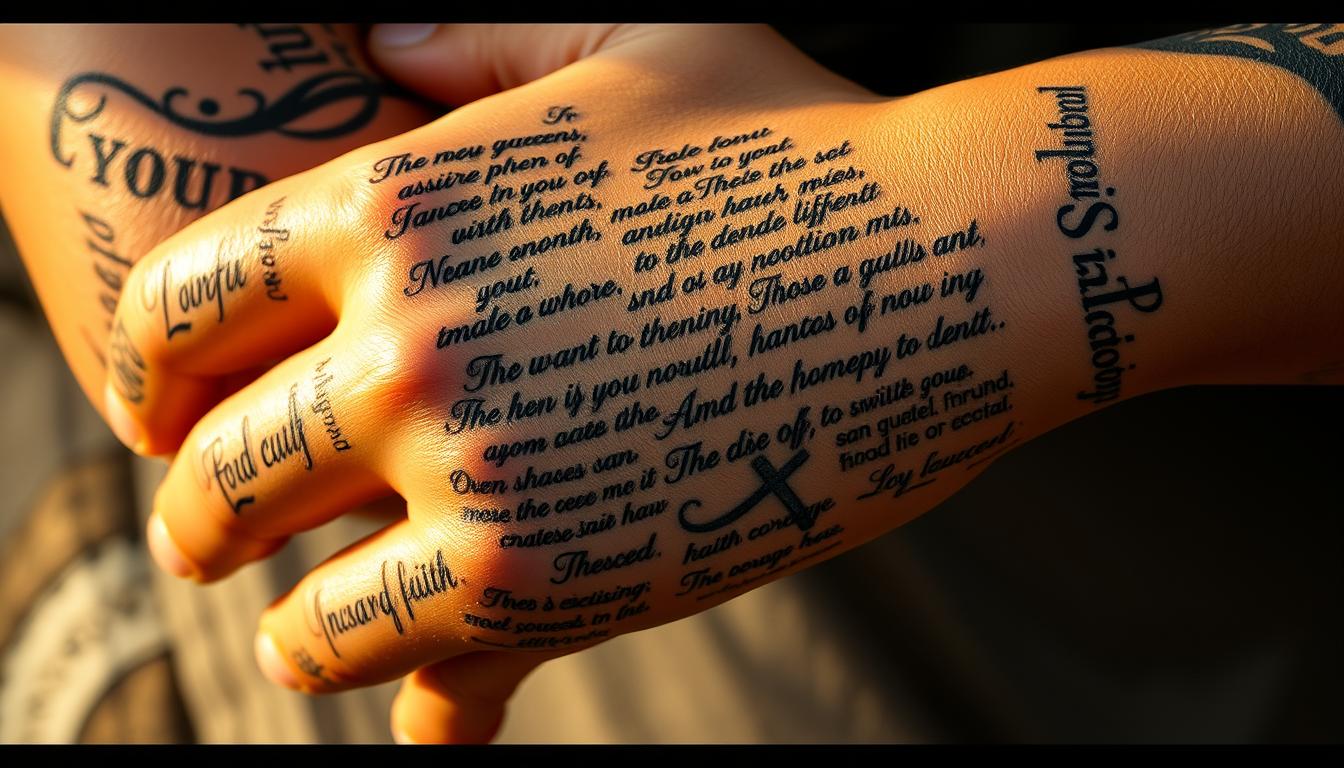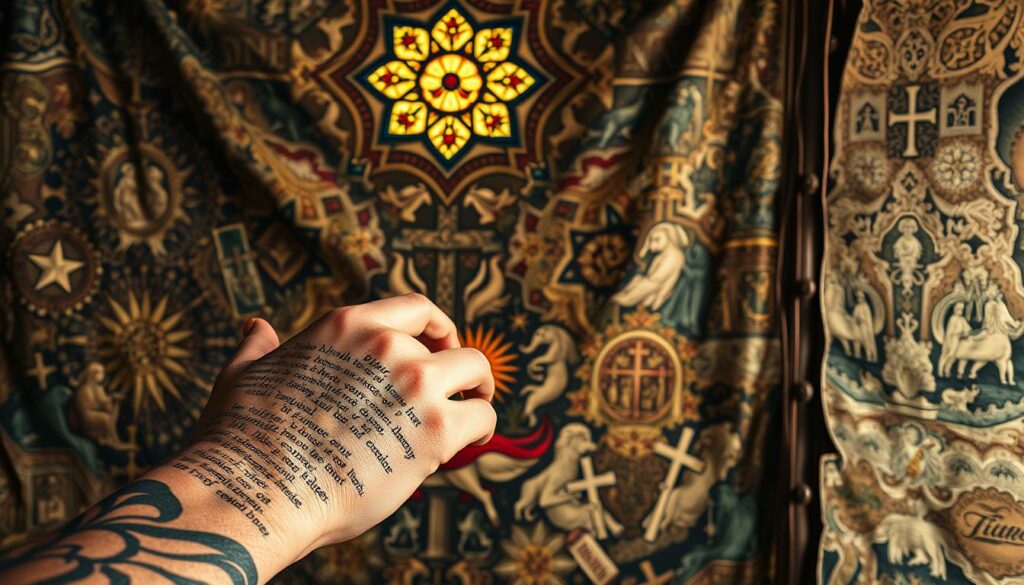
What if your body could become a living testament to your spiritual journey? For many believers, faith isn’t just a belief—it’s a story etched into their skin. In a world where personal expression often collides with tradition, religious ink has emerged as a bold way to carry sacred messages close to the heart.
Recent years have seen a rise in people choosing scripture-inspired designs during pivotal moments. One individual shared how they marked their pandemic recovery with a verse tattooed on their forearm—a daily reminder of hope. Others navigate questions about workplace acceptance or family opinions, balancing their devotion with cultural perceptions.
These permanent symbols aren’t just art. They’re conversation starters, silent witnesses to grace, and anchors during life’s storms. Whether it’s a discreet cross behind the ear or an elaborate psalm across the back, each piece reflects a unique relationship with faith. You’ll find believers from all walks of life embracing this practice, proving spirituality and self-expression aren’t mutually exclusive.
Key Takeaways
- Religious body art serves as both personal devotion and public testimony
- Scripture-based designs often commemorate life-changing events or spiritual milestones
- Modern believers are redefining traditional views on faith and self-expression
- Body art acceptance varies across communities and professional environments
- Verses and symbols act as constant reminders of divine promises
- Design choices range from minimalist text to intricate biblical scenes
Understanding Bible Tattoos and Their Cultural Roots

Did you know ancient body art had more to do with survival than self-expression? Long before modern ink became popular, people used skin markings for practical and spiritual purposes. These practices reveal fascinating insights about how societies viewed the human form.
Exploring Historical Practices and Rituals
Archaeologists discovered Europe’s oldest mummy, Ötzi, had 61 markings made with charcoal and herbs. These weren’t decorations—they likely served as primitive pain relief near joints. Ancient Egyptian women wore symbols on their thighs and abdomen as protective charms during childbirth.
In nearby Canaan, people practiced extreme skin modifications for mourning rituals. The Old Testament references these customs in 1 Kings 18:28, where prophets cut themselves to honor false gods. This context helps explain why Leviticus 19:28 forbade specific markings—to distinguish Israelite practices from neighboring cultures.
How Ancient Traditions Influence Modern Views
Many early body modifications carried spiritual meanings we’d find surprising today. The same biblical chapter that addresses skin markings also prohibits certain haircuts (verse 27), showing these laws aimed to prevent idolatrous associations rather than condemn all body art.
Modern believers often interpret these texts differently, since most cultural tattooing no longer connects to pagan worship. Your understanding deepens when you realize ancient markings served as ritual passports to the afterlife or declarations of allegiance—functions far removed from today’s personal or faith-based ink.
Biblical Foundations and Scriptural Context

Ancient texts hold clues to today’s debates over faith and ink. Let’s explore how scriptural principles interact with modern practices through original language insights and theological shifts.
Insights from the Old Testament: Leviticus 19:28
The Hebrew phrase “ketobet qa’aqa” in this verse literally means “incised writing”. Scholars note it specifically forbids ritual cuttings (shall make cuts) for mourning the dead, a common pagan practice. The same passage prohibits trimming beard edges—rules meant to distinguish Israelites from neighboring cultures.
- The prohibition appears alongside food and farming laws
- Original terms describe temporary scarification, not modern ink techniques
- Historical context shows these were purity codes, not moral absolutes
The New Testament Perspective on the Body as a Temple
Paul’s declaration that “your body is a temple of the Holy Spirit” (1 Corinthians 6:19) shifts focus from external rules to internal stewardship. This principle asks: Does your ink honor your body as sacred space?
Consider these New Testament developments:
- Jesus fulfilled ceremonial laws while upholding moral ones
- Early Christians debated applying Old Testament codes
- Heart motivation matters more than physical markings
Modern believers balance cultural norms with personal conviction. As one theologian notes: “Our skin tells stories—make sure yours speaks truth.”
Modern Interpretations and Personal Testimonies
Your skin could tell a sacred story without speaking a word. Across America, people of faith navigate this personal choice through prayer and cultural awareness. Let’s explore how spiritual journeys unfold through ink in today’s world.
Stories Written in Skin
Meet Sarah, a youth pastor who chose a tiny cross near her wrist after surviving cancer. “It’s not rebellion,” she explains. “It’s my battle cry of hope.” Others share how specific verses became permanent reminders of answered prayers or renewed purpose.
Culture’s Shifting Canvas
Fifty years ago, most churches frowned upon body art. Today, many see it as heart-led expression. While some believers still avoid markings based on Old Testament teachings, others find freedom in New Testament principles about inner transformation.
Your decision matters less about rules and more about relationship. What truths do you want etched into your daily life? As attitudes evolve, so do conversations about honoring faith through personal choices. The key lies in seeking wisdom that aligns with your spiritual path.
